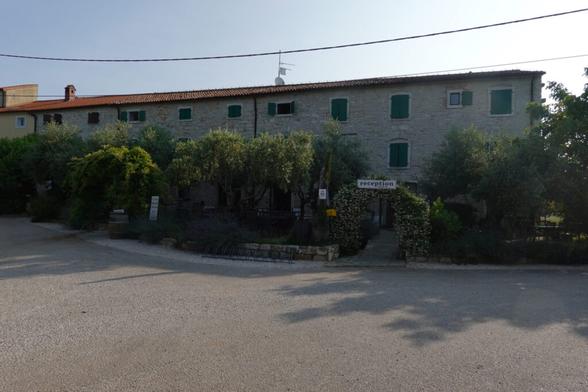@sinchens_ Das m.E. größere Problem über das die braune #CDU natürlich nicht sprechen kann und das @gruenenrw mit zu verantworten haben ist die sinnlose Zerstörung des Waldes und Eskalation der #klimakatastrophe für #Kohle, #Kies, #Schotter und sinnlose #Autobahnen. #NRWE ist da Spitzenreiter, siehe z.B. #hambacherforst und #sterkraderWald.
#Schotter
Auf der #WDR-Webseite wird in Bericht mit RWE und Polizei als Quellenangabe die staatliche Unterstützung der aktuell versuchten gewaltsamen Räumung und Zerstörung des #Sündenwäldchen nahe des #HambacherWald, wie schon im #Hambi, zum friedvollen Hilfseinsatz umgeframed...
"Höhenretter" (bewaffnete Klettercops) sollen Besetzer*innen aus ihren "vom Sturm beschädigten" Baumhäusern "retten", aber nur, wenn sie nicht "freiwillig" gehen.
Mal wieder ein Polizeieinsatz für #Kohle, #Kies und #Schotter in #NordrheinWestfalen...
https://www1.wdr.de/nachrichten/rheinland/tagebau-hambach-manheim-erbwald-raeumung-100.html
Wat'n scheun Tach!
Supermond
Morgennebel
Blauer Himmel
Sonne satt!
Und dann noch dies Blatt
in seiner ganzen Pracht.
Temperaturen in der Sonne im Windschatten satte 35 Grad Celsius!
Also Liege raus, Ausziehen und Brezeln lassen.
Da hat der November-Blues keine Chance.
6.11.2025
#Blatt #Herbst #Sonnenschein #autumn #Schotter #Herbstfoto #temperatur #sonne #autumnphoto #dailyphoto #myphoto #colorsofnature #Momentesammler #nahaufnahme #closeup #fotografierenmachtglücklich #Naturmoment #smartphonephotography #Smartphonefotografie
#gravel #glass #Glas #Schotter #Gleisbett #trackBed #ballast #trackBallast
📍 Bressanone/Brixen ➡️ St. Magdalena
— 22.98km & 1,228vm —
Hello Pixelfed community 👋🏻 I wanted to try this out and figured I’d jump in the deep end, sharing my recent big adventure (as adventuring thru the 🏔️ by bike, skis, climbing or on foot is what I do) through the Dolomites.
This is an adventure I’ve been wanting to go on for several years so I could finally explore this range more in depth (I mean, I’ve been there once and had fallen in love right away: my favourite place on earth 💚).
The first day was mostly about getting to the Dolomites. Two train rides and a longer waiting time for the second one meant I had time for a little stroll through Innsbruck’s old town.
Once I finally arrived in Brixen, the adventure could begin… with a sufferfest of 1200m of vertical in one go. I mean, you have to get to the mountains before you can ride through them. So I did just that.
I got to Sankt Magdalena in the late afternoon. Unfortunately the clouds were hanging low so the famous panorama of the church with Sas Rigais and Furchetta behind were hidden from view.
I found a cozy and covered spot to have dinner just above the village… then the storm rolled in, and boy was I happy that I had a roof over my head. It meant I cut the ride shorter than I would have liked. But I had a safe spot to sleep.
#bikepacking #dolomiten #dolomitesunesco #gravelgrinding #bikepackher #multiday #radfahrenmachtglücklich #fahrrad #radln #italianalps #lifebehindbars #girlswhoridebikes #gravelbikepacking #gravelbikelife #schotter #gravelroads #mountainbikingisfun #ultracycling #endurancesports
… auf eigene Gefahr #GRVL #Gravel #cycling #CycleAndEnjoy #Photography #GräwwelRatt GRÄWWEL.de #Schotter #DortmundOrbit
#GRVL #Gravel #cycling #CycleAndEnjoy #Photography #GräwwelRatt GRÄWWEL.de #Schotter
Auf den Spuren der Parenzana: Von Buje nach Vižinada– durch das Herz Istriens mit Schwierigkeiten
Mittlerweile, sind die Beine schon warmgeradelt bzw. auch schon müde nach den letzten 4 Etappen? Aber, jetzt tauchen wir ein ins absolute Herz Istriens, in den hügeligen, grünen, rotbraunen Teil, wo der Radweg seinen Charakter so richtig entfaltet.
Von Buje nach Vižinada das ist kein einfaches Dahingleiten, das ist eine Achterbahnfahrt der Gefühle, 50 km bergauf und bergab, die meiste […]
https://www.brigitteundrolandunterwegs.com/b/7pH
#BeschilderungRadweg #Buje #CasaRomantica #CasaRomanticaParenzana #Cevapcici #Fahrradpanne #FahrradurlaubParenzana #Grožnjan #Hotel #Hügelkuppen #Istrien #Konoba #Kultur #Künstlerdorf #Naturerlebnisse #Panoramablick #Parenzana #ParenzanaEtappe #Patschen #Radeln #Radfahren #Radreisen #Radtour #Salinenfelder #schmalspurbahn #Schotter #Schotterpiste #Tunnel #Viadukte #Vižinada
Schotter, Schweiß und Schnitzkunst: Gravel-Tour zur Madonna im Zennwald lockt Radbegeisterte in Fürth
https://fuerthaktuell.de/?p=4370
#fürth #gravel #radtour #zennwald #schotter #schnitzkunst #kultur #naturerlebnis #madonna #holzskulptur #abenteuer #franken #mittelfranken #bayern #news
Black Ends
01.05.2025 Berlin / Urban Spree
Bloodred Hourglass
09.10.2025 Berlin / Cassiopeia
Schotter
12.04.2025 Berlin / Jugendfunkhaus
The Night Eternal
27.02.2025 Berlin / Reset
Yellowcard
24.06.2025 Berlin / Huxleys
#Berlin #BlackEnds #BloodredHourglass #Cassiopeia #Huxleys #Jugendfunkhaus #Reset #Schotter #TheNightEternal #UrbanSpree #Yellowcard #SteelFeed
Lastwagen kippt in Oberfranken um: Fahrer verletzt https://www.diebayern.de/wirtschaft/lastwagen-kippt-in-oberfranken-um-fahrer-verletzt-2984046?utm_source=Mastodon&utm_medium=dpa&utm_content=textlink #Verkehr #Bayern #Unfälle #Bahn #Pommersfelden #Lastwagen #Oberfranken #Unfall #Schotter
Ich suche ein neues #Gravel #Fahrrad. Weniger um auf #Schotter rumzufahren, sondern mehr um die teils beschissenen #Radwege erträglicher zu machen. Mit dem #Rennrad auf der Straße mit den bekloppten #Autofahrern rumzufahren hab ich erst Recht keinen Bock. Irgendwelche Empfehlungen? Am besten mit bergtauglicher Übersetzung/ Schaltung.
I’ve given some talks in the past 6 months about the history of computer art, and in particular art created with pen plotters and drawing machines. As I got into building plotters last year, I didn’t initially think too much about the background to what I was doing; but, being an historian, I then started to dig into it, looking back to the emergence of computer art of the 1950s and 1960s.
My personal favourite piece, Schotter (“Gravel”) by Georg Nees, was made using an algorithm.
At a high level, it’s a simple and very effective rule – draw a square; repeat, adding a small but increasing amount of rotation (noise) with each column and row. Such a basic piece of code produces a wonderful and pleasing – to my eyes – “disintegration” effect. My description is a very simplistic way of understanding the code – more recently, Zellyn Hunter has done a fabulous two part deep dive on the program, going as far as recovering the random seed used to create the specific piece of work that is part of the collection at the V&A Museum in London1. Until about a month ago I had an alternate / approximated version2 hanging just inside the door of the studio, and thanks to Zellyn I now have a precise recreation generated from Python, plotted using my own machine, on fine black paper using gold ink.
Schotter, in the V&A Museum, LondonRecreation of Schotter, Forge & Craft studio, LondonIn my talks, I’ve joked that we can think of these in-their-time “magical” programs as being like AI, but in old school terms, they are just algorithms.
To say that today’s AI is “just algorithms” would be ridiculously reductive – that form of AI involves not just algorithms, but vast Large Language Models that inform the outcomes of the generated art or text or code; but ultimately it is just super-powered autocorrect and applied statistics3, which derives superpowers from the corpus of data that it has been trained on. I completely understand the concerns around how that data is being acquired and (mis)used, and the skepticism and trepidation and other reasons folks have to disdain “AI”.4
One of the common things we get asked when showing our plotter art is, literally: "where is the art in this?" (thus the title and inspiration for my talk); or "so, the computer did it / it's all done with AI then?" (the implication being that we didn’t really make any creative effort of our own).
In our (Forge & Craft case), the work tends to divide between two types and styles (not exclusively, but mostly):
- things I generated using code, mostly experimenting in different languages and frameworks as I learn – this is usually referred to as “generative art”;
- images taken as photographs by one of us, transformed into plottable line art using algorithms (we use DrawingBotV3 for this, it has an amazing range of path finding modules, excellent support, and solid knowledge of a range of different plotters including output to Inkscape SVG for AxiDraw, or to HPGL for my vintage plotter).
Is that “AI”? No – we’re not using what is known as generative AI in those cases. I have, of course, experimented with tools like Midjourney and so forth for some limited image generation, and for some coding assistance – I’m a curious technologist, and I like to explore new tools – but, in terms of putting down the lines in the plots, we’re using algorithms to derive the pen paths.
We also work with analogue materials i.e. the pens and inks and papers are themselves an artistic set of choices. Take a couple of my other pieces, 1984, and Cellular.
The piece on the left is a Cistercian numeral or cipher. I used Python code to generate the glyph here; I used DrawingBotV3 to process the SVG into a plottable format (a close look would reveal it is a dense squiggly line fill); this was plotted using sepia fineliner onto cotton rag paper. The piece on the right was made using an online generation tool, and plotted using bronze Uniball onto the same cotton rag paper.
In both cases I’m showing the dichotomy of ostensibly old formats (handmade paper, Cistercian numerals) and modernity (the notion of “1984” be it the Orwellian, or the Apple ad; the bronze metallic ink); and doing that via the physicality of analogue output. Oh, as a side note, this cotton rag paper is pretty challenging to plot onto – it undulates so the pen can easily drag unexpectedly, and I found that some “babysitting” of the machine was required. No AI there.
In relation to the analog element, I love these words from Freya Marshall in the recent book Tracing the Line:
… to see an image take shape, line by line, is […] hypnotic. In the age of social media, where hour-long plots can be condensed into 20-second videos that are instantly attention-grabbing, it is not difficult to see how the pen plotter has risen in popularity […]
Freya Marshall, Tracing the Line
Another author, Carl Lostritto, writes beautifully about this in Computational Drawing:
… when drawing with ink, time and material are consequential.
Even though the volume of ink is almost never enough to provide measurable depth, the behavior of the material ink as it interacts with the material paper participates in cuing and undermining depth. Ink affects paper and paper affects ink. […]
Ironically, pen-plotters, machines that move a physical pen in two axes across paper, were marketed as output devices for architectural and engineering technical drawings. Now, almost all have been re-appropriated by artists, designers, and architects who cherish them for the very qualities that made them obsolete.
Carl Lostritto, Computational Drawing
My blog post today was prompted by being asked whether the generative art stickers I wrote about, created by my friend bleeptrack, use AI. Well, first of all, it’s not my art so I’m not going to go deep into explaining or defending the work itself (there is an explainer and video on the website, and both mention the generative and algorithmic nature of the pieces). Secondly I coincidentally also saw today, an excellent piece by Monokai that seeks to separate algorithmic art from generative art and from AI, for many of the same reasons I’ve done above – it also mentions a number of the original algorithmic artists from the 1960s. I also prefer to specify that I’m talking about computer art in my historical coverage, rather than digital art or net art or demo party art (or or or…), which are distinct genres. By the way, folks like Rev Dan Catt are doing some incredible work with AI: creating a personalised assistant, Kitty; and applying the technology tools and his amazing brain to creating ever more impressive artwork – see his Artist Statement.
I’m not here to bash on “AI”, but I do want to draw some distinctions around how and when and where tools are used, and assumptions are made. I’m no apologist for OpenAI, Anthropic, Perplexity and others; I’m an informed skeptic. A kneejerk reaction of “AI = bad” does not take account of how the term “AI” is being misused everywhere to justify investments and valuations – a lot of stuff we previously labelled “algorithmic” is suddenly a flashy new “AI feature”, when it remains simply a complex set of advanced computing techniques and mathematics; equally, separating out an assumption that all “AI” is the result of misappropriated data in a large language model, is important.
Finally, I don’t have videos from the talks I’ve given (at QCon, and at EMF) available to link to at the moment, but I made a small webpage with more information and links to my sources, if you would like to do more reading around the topics of the history of computer art, pen plotters, and how to get involved. I hope you find that interesting and useful!
- I visited the V&A earlier this year and asked to spend time examining this piece, and several other early computer art pieces, in the reading room – part of my research for the “Where Is The Art?” talk. ↩︎
- I generated a version using the Whiskers library in Rust, which comes with a handy interactive demo GUI for playing with the same style of piece. ↩︎
- It is also not Intelligent, just backed by a lot of data that makes it sound clever. ↩︎
- I am particularly angered by the underhand approaches that various organisations are taking, intentionally subverting and ignoring long-held internet norms and contracts like
robots.txt, but that’s a different blog post, for another day. ↩︎
Like it? Share it -
- Click to share on Mastodon (Opens in new window)
- Click to share on LinkedIn (Opens in new window)
- Click to share on Facebook (Opens in new window)
https://andypiper.co.uk/2024/07/30/art-and-algorithms-vs-ai/
#100DaysToOffload #art #Books #computerArt #digitalArt #generativeAi #generativeArt #penPlotter #plotterArt #presentations #Reading #schotter
I ran across @twilliability when they did a “Schotter” plot: https://genart.social/@twilliability/112796169208899812
But you should check out all their plots: https://aka-gabor.xyz/art/plots/
Absolutely gorgeous!
#genart (the good kind) #plotterart #nees #schotter
Pflanzen statt Schotter
Ideen für vielfältige und pflegeleichte Vorgärten
#Vorgärten sind die Aushängeschilder des Hauses. Sie sollen einladend aussehen, aber möglichst wenig Arbeit machen. Der Trend zu #Kies und #Schotter mit nur wenigen oder gar keinen #Pflanzen ist in vielen Kommunen unübersehbar. Ein Trend mit negativen Folgen für #Tiere, Menschen und #Klima. Doch es geht auch anders – Drei Alternativen.
🔗 https://www.nabu.de/umwelt-und-ressourcen/oekologisch-leben/balkon-und-garten/grundlagen/planung/28500.html
#Umwelt #Natur
Deutsche Bahn will Schienen und Schotter deutlich öfter recyceln
https://bahnblogstelle.com/218512/deutsche-bahn-will-schienen-und-schotter-deutlich-oefter-recyceln/
#DeutscheBahn #Bahn #Schiene #Schotter #Recycling #Gleisbau #Wiederverwendung #Klimaschutz
St. Josefs-Hospital Olsberg – Abriss des Stationstrakts
https://privatarchiv.rzgierskopp.de/2021/05/st-josefs-hospital-olsberg-abriss-des-stationstrakts-16/
#Abriss #Bau #Bilder #Filme #Gesundheit #Kirche #KsterMartin #Olsberg #OlsbergMittendrin #PfarrgemeindeStNikolausOlsberg #PfarrkircheStNikolausOlsberg #StJosefsHospitalOlsberg #StadtOlsberg #Badeabteilung #Drohne #Kirchturm #nl2408 #OlsbergerKrankenhaus #Pfarrkirche #Reha #Rehabilitation #Rehabilitationsmedizin #Schotter #Stationstrakt
Schotter und Äste auf Schienen gelegt – zwei S-Bahnen beschädigt
#Schotter #Äste #Schiene #Gleis #Bundespolizei #Bayern #SBahn #Sachbeschädigung
https://bahnblogstelle.com/217495/schotter-und-aeste-auf-schienen-gelegt-zwei-s-bahnen-beschaedigt/
Erneut lange Bahn-Baustelle zwischen Düsseldorf und Duisburg
Oh, und der erste Platten mit dem neuen Rad! Extra Challenge: Dorn mit Kontaktlinsen und Altersweitsicht aus dem Mantel ziehen.. 🧐











